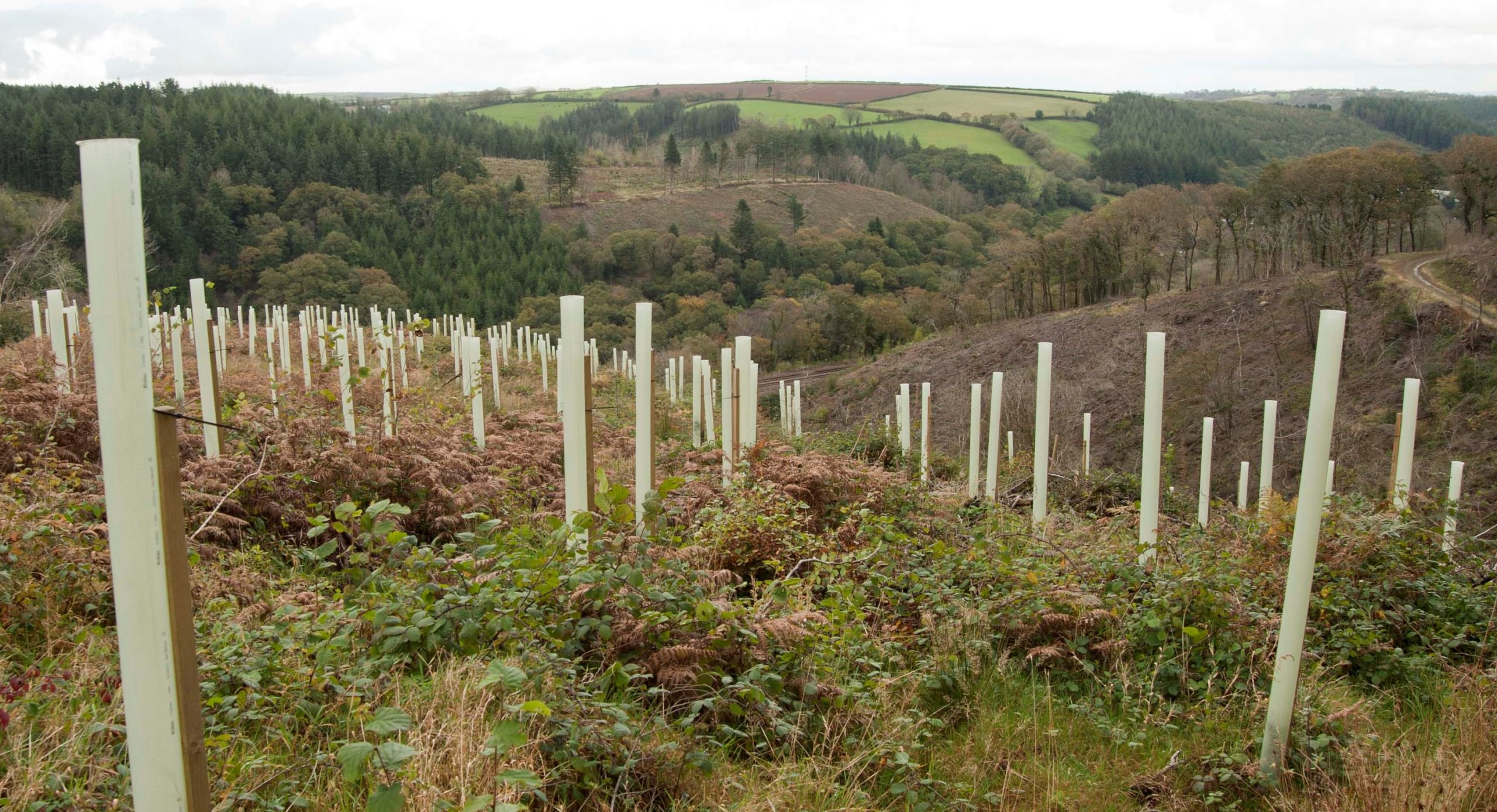Ramorum disease, caused by infection by the water mould organism Phytophthora ramorum, brings particular challenges for foresters.
They will be required by law to fell known infected trees and, as a precaution, other susceptible trees plants around them. Although the latter trees might not be showing symptoms of the disease, the evidence indicates that there is a high likelihood that at least some of them will be infected.

They will then need to restock (replant) the site with replacement trees. However, because P. ramorum spores can persist in the soil for several years, restocking with tree species known to be susceptible to ramorum disease is not advised. The ramorum disease felling site in the picture above has been restocked with other species in temporary shelters to protect them from browsing animals such as deer and rabbits.
Felling and restocking on sites affected by P. ramorum therefore require a different approach from that which applies in normal forest management. The documents below set out the procedures and factors which must be taken into account when woodland must be felled and replanted as a consequence of ramorum disease.
The first one was specifically written for forest managers in England, but much of the generic advice in it can be applied anywhere in the United Kingdom.
(Note that tree health grants from the England Woodland Grant Scheme, referenced in the first document, have been superceded by the Countryside Stewardship scheme.)
See also:
Next – Section 6: Managing the risk from Heterobasidion annosum fungus on felled larch sites
Back – to Introduction and Contents